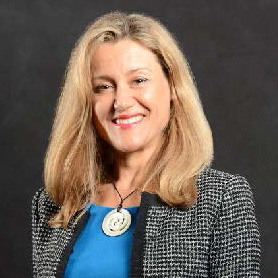For the second year in a row, Arizona State University in Tempe is ranked No. 1 in the nation for its impact in reaching goals set forth by U.N. countries to achieve “a better world” by 2030.
READ ALSO: ASU ranked No. 1 in innovation for 6th year

The annual rankings are presented by Times Higher Education magazine and are the only global performance tables that assess universities against the United Nations’ 17 Sustainable Development Goals (SDGs).
ASU’s ranking is a reflection of the institution’s “impressive ability to rapidly innovate, replicate and scale meaningful solutions,” said Amanda Ellis, director of global partnerships in the Global Futures Laboratory, which is helping lead the effort.
Goals include creating and scaling solutions for climate change, clean water and air, sustainable cities, poverty and hunger, gender equality and quality education.
For the 2021 rankings, 1,117 universities from 94 countries and regions were analyzed. Calibrated indicators were measured to provide comparison across four broad areas: research, stewardship, outreach and teaching.
ASU scored highest in goal of “sustainable cities and communities”
ASU received its highest scores in the goal of sustainable cities and communities followed by responsible consumption and production, eradicating poverty, clean sanitation and water, and climate action.
Overall, ASU scored 95.8 out of 100 points, placing it ahead of Purdue University, the Massachusetts Institute of Technology, Penn State University, and the University of North Carolina at Chapel Hill.
ASU ranks ninth in global rankings
In the global rankings, ASU tied for ninth in the world out of 1,115 institutions from more than a dozen countries, ahead of schools like King’s College London, the University of British Columbia and Western Sydney University.
Future’s Lab, School of Global Management leading effort

Leading the effort to attain SDGs are ASU’s Julie Ann Wrigley Global Futures Laboratory and the Thunderbird School of Global Management.
Sanjeev Khagram, CEO, director general and dean of Thunderbird, who led the establishment of a global network —the Global Partnership for Sustainable Development Data — to use data to achieve the goals, said it is the largest multi stakeholder initiative of its kind.
“We must make this the decade of delivery worldwide,” Khagram said.
Programs helping the planet
Some of the ASU programs that are contributing to achieving sustainability goals include:
• Global Carbon Removal Partnership Public, private and civic members of the partnership work to influence policy and market environments to support the rapid scale-up of carbon removal actions.
• The Connective is a consortium that is building a “smart region” in the greater Phoenix area with Thunderbird’s Phoenix Global Rising Initiative. This global multi-stakeholder partnership is advancing Phoenix’s goals to deploy equitable and scalable technology solutions that support sustainability and improving quality of life.
• Decision Center for a Desert City The center is focused on advancing research, education and partnerships for urban water transitions through the power of data. Complementing its work is the Kyl Center for Water Policy, which promotes research, analysis, collaboration and dialogue to build consensus on sound water stewardship for Arizona and the West.
• Swette Center for Sustainable Food Systems The Center provides research and education options to address the integrity of the agriculture systems and the well-being of farmers, producers and providers, and help drive policy-relevant knowledge to ensure food safety.

“Our purpose at ASU is not only to support these goals by aligning our programs and service to local and global communities but to build upon them beyond 2030 so that we, as a global community, are shaping and creating bold ideas for a planet-positive future through opportunity, not sacrifice,” said Peter Schlosser, vice president and vice provost of the Global Futures Laboratory.
This story was originally published at Chamber Business News.




